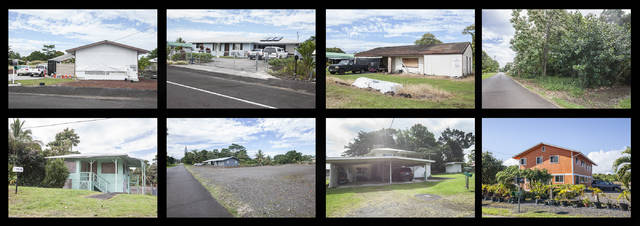A project to renovate several properties in Keaukaha may be able to proceed after a state environmental assessment was published earlier this month.
The Keaukaha Residential Lots Rehabilitation and Infill project is a proposal by the Department of Hawaiian Home Lands to add more residences and improve existing residences within the Keaukaha Residential Lots subdivision over the course of five years.
The project would use an estimated $15 million in federal and state funds to encourage Keaukaha lessees to build on vacant lots, award other lots to people on the waiting list and rehabilitate homes for residents under a certain household income level.
Much of the funding would be derived from the Native American Housing Assistance and Self-Determination Act of 1996, with the remainder possibly coming from state funds.
The environmental assessment found no significant impacts from the proposed project and is undergoing environmental review with the Department of Health’s Office of Environmental Quality Control.
The project has been a long-gestating one, with Patrick Kahawaiolaa, president of the Keaukaha Community Association, saying it has been discussed for more than five years.
“I’m glad it’s almost over,” Kahawaiolaa said. “It’s taken years to get this done.”
The financial assistance provided by the project — which is expected to begin this year — is intended to give the Keaukaha subdivision some much-needed quality-of-life improvements. The subdivision, one of the state’s Hawaiian Home Lands, is considerably run-down
in places, and new developments in the subdivision will require updates to certain utilities.
Kahawaiolaa was particularly pleased that the environmental assessment addresses noise attenuation.
Located directly north of Hilo International Airport, the subdivision is exposed to a significant amount of flight noise, and the Department of Transportation will install noise reduction measures on affected lots when the project begins.
While the assessment found no significant impacts, additional assessments will be required before the project can begin, including a safety assessment on the above-ground fuel tanks at Hilo Harbor, less than a mile away.
“It’s always been about how we were there first,” Kahawaiolaa said.
“We were there, we built up a community and other people built up around us. We’re victims of progress, I guess you could call it.”
“People have an obligation to help this community,” Kahawaiolaa continued. “It just happens that this is a Native Hawaiian community.”
Email Michael Brestovansky at mbrestovansky@hawaiitribune-herald.com.






